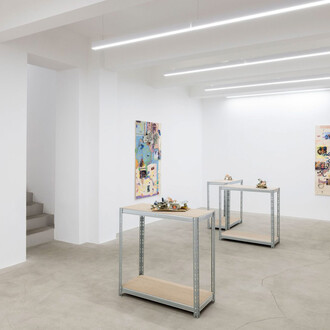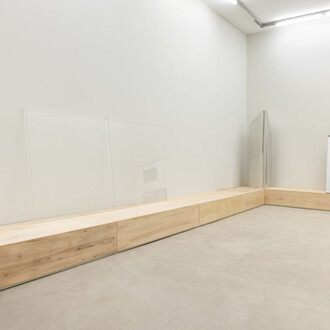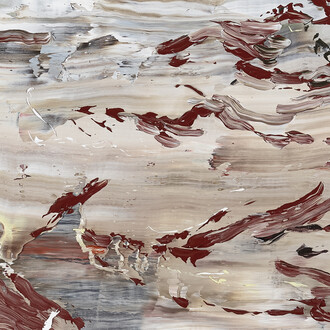Galleria Vik Milano presents Mémoires, the new solo exhibition by Massimo Boffa, curated by Alessandro Riva, running from October 16 to November 16, 2025. The exhibition gathers around twenty recent works, all small and medium format, created in recent years and representative of his most current artistic phase.
A refined journalist and writer, for decades author of reports, correspondences, and cultural chronicles for some of the most important Italian newspapers, Boffa only later turned to painting, transforming into images the places that have marked his life. His childhood in Moscow, the Adriatic cities such as Cervia or Cesenatico, his travels in the Mediterranean, and the neighborhoods of Milan resurface on canvas as suspended geographies, reduced to pure and luminous forms in paintings often of small, if not very small, dimensions—miniatures of a world that seems to be vanishing before our very eyes even as we continue to celebrate it. As Aldo Damioli, Milanese painter and Boffa’s mentor, has observed, Boffa “breaks what has by now almost become a rule of contemporary art – characterized by gigantism and drama – by painting small works, plausible subjects, clear and luminous tones, solid volumes without ambiguity. Clarity is intended as a primary value, a real and healthy need for the mind.”
The places Boffa depicts in his paintings – the rigorous Milanese suburbs, the snow-covered squares of Moscow, the trains crossing the countryside, the solitary and austere crossroads – are rendered with a sharpness that is never photographic but recalls the lucid suspension of a morning dream: images clear and luminous yet imbued with a subtle aura of estrangement. “Boffa’s work thus becomes a journey through many different places,” writes the curator, Alessandro Riva, “which nevertheless, in their pictorial transfiguration, become a single visual fabric, the result of a rigorous pictorial reconstruction of real architectures that is, at the same time, fantastic and estranging. It is no longer that urban chaos in which houses, streets, and buildings overlap one another without continuity or apparent order, but an equilibrium of lines and volumes that envelops the gaze in a clear horizon, made of calm suspension of time and space. It is the approach of an artist who plays hide and seek with memory – his own and ours: private and public memory, memory of places seen but also of other paintings, from Carrà’s Return to order to De Chirico’s Italian squares, up to the austere rigor and solidity of the Italian primitives or the suburban landscapes of Sironi.”
His paintings, apparently linear and immediately legible, reveal meticulous research. In La scuola rossa (2025), the brick building emerges from the snow, solid and mute, while in Prima neve (2025) a Moscow suburb is transformed into a metaphysical scene. In La traversata (2025) and Verso il Pireo (2020), ships become geometric architectures suspended over the Aegean, while in Milano Bicocca (2025) the motionless trucks become silent monuments, reminiscent of much early 20th-century painting. In Cervia, il porto canale, the landscape grows denser with echoes, where one seems to glimpse the reflection of Carrà’s seascapes in the background, while in Panchina nel parco (2013) a minimal detail gains the strength of an evocative absence, almost like the incipit of a novel with strong romantic and intimate undertones. It is a painting “written in pencil,” to quote Duccio Trombadori, the renowned Roman critic and art historian who appreciates and follows the artist’s work, “distilling poetic sap from the smallest traces of environmental and existential circumstances.”















